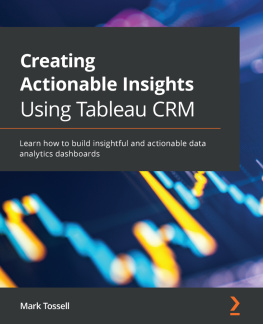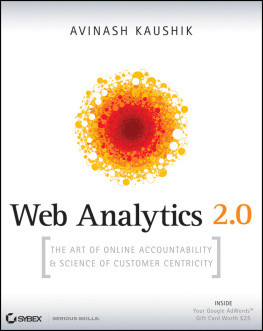Numbers tell stories. They trumpet a businesss triumphs. They expose weak spots and danger zones. They reveal so many stark truths, good and bad, about an organization. But are there other, potentially lucrative, stories buried in the balance sheet that the numbers might tell us?
The fact is that while a companys financial data provide a wealth of information, they also hold hidden secretsunless you know where to look. Unless you know how to crack the code. Traditional accounting methods only reveal a partial picture of a companys performance. Profitability analytics is the oracle, the truth teller, the code breaker that crunches the reams of financial information from different facets in a large organization and spotlights novel, impactful ways of cutting costs and increasing profits.
If numbers tell the story of whats going on in a business, then profitability analytics look beyond surface-level accounting, peering deep down into the inner workings of a company to unveil the detail and nuance of the economicsof the business itself. If accounting is focused on the basic whathappened, in terms of expenses and income, profitability analytics considers the whyit happened, by constructing a multidimensional view based on a broader set of variables and studying each variable on a granular level. Its powerful stuff.
By teaching you the fundamentals of profitability and cost analytics, this book will empower you to make crucial business decisions based on stronger evidence and a clearer set of criteria, instead of relying on inaccurate or inadequate data, anecdotal evidence, or gut feeling. We will go beyond the eye candy of visualizations, charting, and graphs of common business intelligence tools, and get under the hood of what it really takes to design, develop, and deploy actionable profitability analytics that produce meaningful insights and drive profitable behaviors.
Technologically, methodologically, and systematically, its not an easy undertaking, but better analytics on the economics of the business willdramatically improve financial performance.
In the following pages, youll gain a better understanding of how methodology, data, and technology come together to transform information to insight to impact. We will discuss the most challenging methodologies, the most common implementation challenges, and how to drive the most value to make the business case for these programs. These solutions are complex, requiring careful design, rigorous governance, and meticulous planning. Often, its more art than science. You cant just plug-and-play the same set of formulas or let number-crunching software do all the heavy lifting. Rather, each case requires flexibility and problem-solving to apply the methods to an organizations unique business model and information demands. And even when you have an analytical program up and running, the challenge isnt over. These efforts are a journey and not a destinationcontinuous improvement and iteration are the keys to success.
While written primarily for CFOs, CIOs, and other leaders of Fortune 2000 companies, the principles and practices contained herein are applicable to a wide range of firms. Most of the examples youll read about concern the financial services industry, but the lessons in this book are applicable to a number of other industries, too.
THE ARMADA STORY








